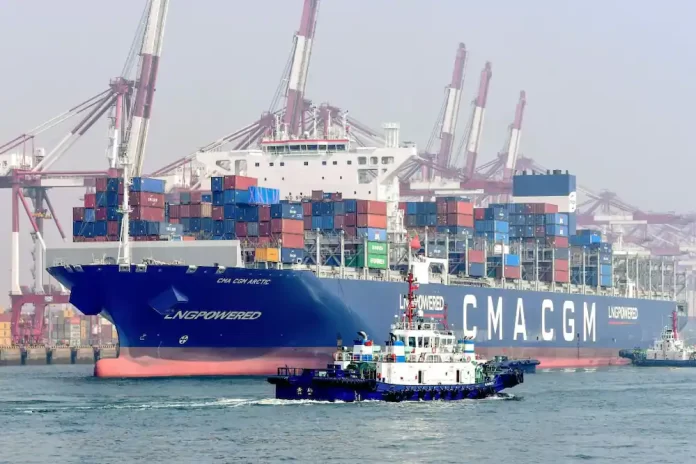World trade growth is expected to slow this year, dampened by the war in Ukraine, inflation, tighter monetary policies, and financial uncertainty, according to WTO projections released on Wednesday.
The outlook for the global economy has improved slightly since the World Trade Organization’s most recent trade forecast was released in October, but the pace of trade expansion in 2023 is expected to be “weak”.
WTO economists now forecast merchandise trade volume growth of 1.7% in 2023 — up from the 1.0% estimate made in October, after rising 2.7% in 2023. 2022.
According to the WTO, a key factor in this improvement is the relaxation of controls related to the Covid-19 pandemic in China, which should release the accumulated consumer demand in the country and thus stimulate international trade.
“Of course, a peaceful end to the war in Ukraine and a broader reduction in geopolitical tensions would also significantly improve the outlook for the global economy,” WTO chief economist Ralph Ossa said at a press conference.
By contrast, he added, while recent bank failures in the United States and Europe appear to have been largely contained, “rapidly rising interest rates could create further strain on financial markets and affect international trade”.
WTO economists expect real GDP growth of 2.4%.
Trade and output growth rates are thus expected to be lower than their respective averages of 2.6% and 2.7% recorded during the 12-year period following the collapse of trade caused by the global financial crisis.
“Trade continues to be a driver of the resilience of the global economy, but it will remain under pressure from external factors in 2023,” said WTO Director-General Ngozi Okonjo-Iweala in an accompanying statement. the publication of the forecasts, calling once again on governments to avoid a “fragmentation of trade” and not to create “barriers to trade”.
The 2.7% increase in world trade volume in 2022 was lower than the 3.5% rate forecast in October by the WTO, due to the fall observed in the fourth quarter of the last year.
Several factors contributed to this fall, including rising global commodity prices, tightening monetary policy in response to inflation, and Covid-19 outbreaks that disrupted production and trade in China.
According to Mr. Ossa, “the lingering effects of Covid-19 and growing geopolitical tensions were the main factors that affected trade and production in 2022 and are likely to continue to do so in 2023”.
It also notes that “interest rate hikes in advanced economies have also revealed weaknesses in banking systems that could lead to broader financial instability if left unaddressed”, and calls on governments and regulators to be “attentive to these financial risks” in the coming months.
After years of expansionary monetary policy, central banks find themselves in a difficult situation in which they must find “a balance” allowing them to contain inflation while supporting economic growth and maintaining financial stability, says the WTO, which warns: “A miscalculation could have negative consequences on the world economy and trade”.
Before adding: “No one ever said it would be easy to backtrack on low-interest rates and we are likely to go through areas of turbulence”.
In 2024, trade growth is expected to rebound to 3.2% and GDP growth to 2.6%.
But this estimate is “tinged with greater than usual uncertainty”, notes the WTO, due to the existence of significant downside risks, including growing geopolitical tensions, global food insecurity, the possibility of unforeseen repercussions from tighter monetary policy, risks affecting financial stability and rising debt levels.
SOURCE: africanews.com





